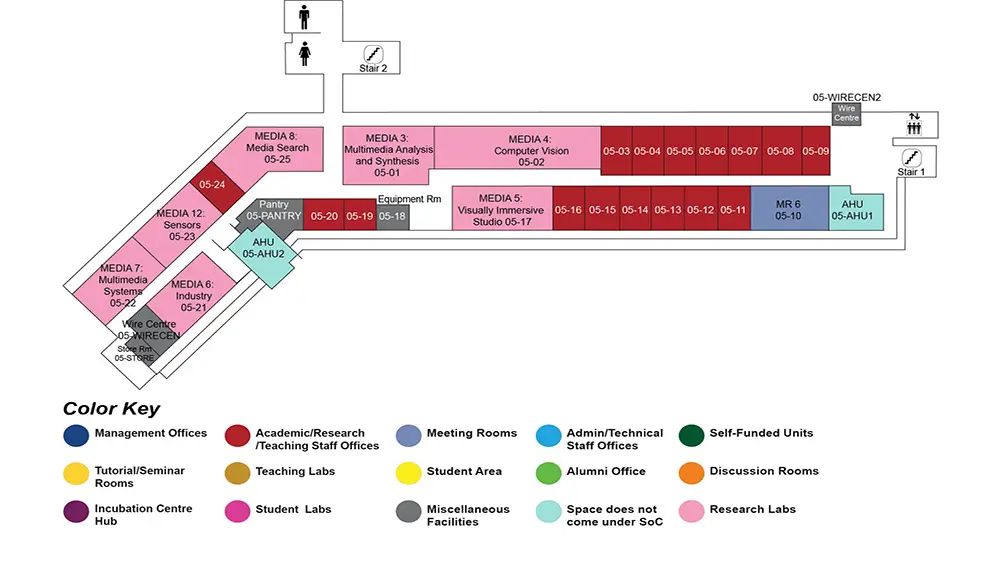Simplifying Mixture Models with the Hierarchical EM Algorithm, and its Application to Analyzing Eye-Movement Patterns of Older Adults
Speaker 2: Associate Professor Janet Hsiao, Department of Psychology, The University of Hong Kong
AS6 Level 5
MR6, AS6-05-10

Abstract:
We propose a hierarchical EM algorithm for simplifying a finite mixture model into a reduced mixture model with fewer mixture components. The reduced model is obtained by maximizing a variational lower bound of the expected log-likelihood of a set of virtual samples. We develop three applications for our mixture simplification algorithm: recursive Bayesian filtering using Gaussian mixture model posteriors, KDE mixture reduction, and belief propagation without sampling. For recursive Bayesian filtering, we propose an efficient algorithm for approximating an arbitrary likelihood function as a sum of scaled Gaussian. Experiments on synthetic data, human location modeling, visual tracking, and vehicle self-localization show that our algorithm can be widely used for probabilistic data analysis, and is more accurate than other mixture simplification methods.
We next present an application of the Hierarchical EM algorithm to analyzing eye-movement data using bottom-up clustering of hidden Markov models. We examine the relationships between eye-movement patterns in face recognition and age-related cognitive decline. We found that significantly more older than young adults adopted holistic patterns, in which most eye fixations landed around the face center, as opposed to analytic patterns, in which eye movements switched among the two eyes and the face center. Participants showing analytic patterns had better performance than those with holistic patterns regardless of age. Interestingly, older adults with lower cognitive status, particularly in executive and visual attention functioning were associated with a higher likelihood of holistic patterns. This result suggests the possibility of using eye movements as an easily deployable screening assessment for cognitive decline in older adults.
Biodata of Speaker 1:
Dr. Antoni B. Chan received the B.S. and M.Eng. degrees in electrical engineering from Cornell University, Ithaca, NY, USA, in 2000 and 2001, respectively, and the Ph.D. degree in electrical and computer engineering from University of California at San Diego (UCSD), La Jolla, CA, USA, in 2008. He was a Visiting Scientist with the Vision and Image Analysis Laboratory, Cornell University, from 2001 to 2003, and a Post-Doctoral Researcher with the Statistical Visual Computing Laboratory, UCSD, in 2009. In 2009 he joined the Department of Computer Science, City University of Hong Kong, Hong Kong, and is currently an Associate Professor. His research interests include computer vision, machine learning, pattern recognition, eye-gaze analysis, and music analysis. Dr. Chan received the National Science Foundation Integrative Graduate Education and Research Training Fellowship from 2006 to 2008, and an Early Career Award from the Research Grants Council of the Hong Kong Special Administrative Region, China, in 2012. He is currently a senior area editor for IEEE Signal Processing Letters, and was an area chair for ICCV 2015 and 2017.
Biodata of Speaker 2:
Dr. Janet Hsiao is an associate professor in the Department of Psychology at the University of Hong Kong and the PI of the Attention Brain and Cognition lab. Before joining HKU, she was a postdoctoral researcher in the Temporal Dynamics of Learning Center at University of California San Diego (UCSD). She received her Ph.D. in Cognitive Science from University of Edinburgh in 2006, her M.S. in Computing Science at Simon Fraser University in 2002, and her B.S. in Computer Science and Information Engineering at National Taiwan University in 1999. Her research interests are in the relationship between human behavior and its underlying cognitive processes/neural mechanisms, using a variety of approaches including computational modeling and cognitive neuroscience (with behavioral, eye movement, and EEG/ERP measures). Dr. Hsiao's current research topics include understanding eye movement behavior and underlying cognitive processes through hidden Markov modeling, how different learning experiences influence perceptual expertise acquisition, and how different expertise domains influence each other.

